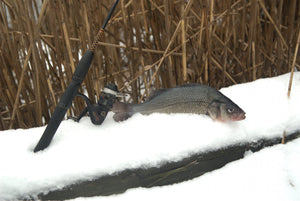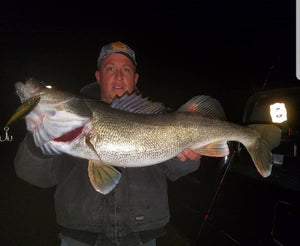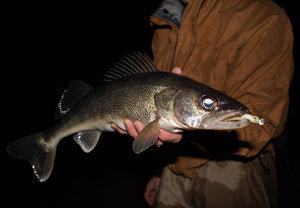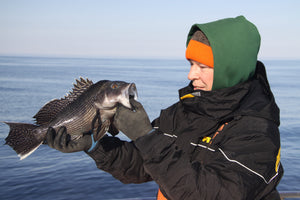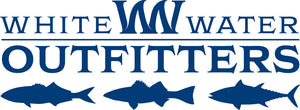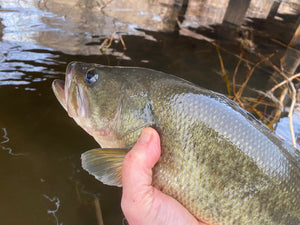Seven Basic Fishing Knots You Need To Know
A lot of things have to go right for anglers TO actually deck that fish of a lifetime. After all, you need to choose the proper gear and pick the right lure, rig or bait. Add in finding the right spot, timing the best tide, keeping a tight line without ripping the hook from your quarry’s mouth, and excelling at the end game with the landing net or gaff, and you can see how the odds might favor a wise old lunker of trophy status.
That said, poorly tied knots have always been the weakest link between anglers and their quarry. True, there are dozens of knots in regular use by fishing sharpies, each with a small advantage in some respect that should help ensure you’ll never see the sickening little curl at the end of your line indicating a bad knot caused a break. For beginning and intermediate anglers, however, it’s generally best to learn a few basic options that are relatively painless to tie, rarely slip, and function with predictably good reliability.
Following are six basic knots that will cover most inshore fishing situations. Practice these on shore before heading out to wet a line. Master these knots now, and progress to more interesting choices as your fishing and knot-tying abilities increase. As you practice, keep the following tips in mind to help ensure a perfect knot every time.
- Use plenty of line to allow yourself to complete tying knots with little difficulty.
- Before tying, lubricate the line with water or saliva to prevent binding and allow the knot to tighten easily.
- Draw each knot tight slowly. When two ends are involved, pull them steadily in opposite directions. Never tighten a knot with quick or jerky movements as this will cause heat to build which can weaken fluorocarbon or monofilament lines.
- Allow at least one quarter of an inch tag end on most knots (slightly longer for braided lines) to discourage the knot from unraveling or slipping.
- If a knot breaks when tightened check the hook, lure or hardware connection for burs or rough spots that may be slicing it.
CONNECTING LINE TO A REEL OR SPOOL
Arbor Knot:
Use an arbor knot to attach fishing line directly to the spool or reel. Wrapping the line five to ten times around smooth spool arbors before tying the knot helps create a slight bit of line friction to prevent the spool from spinning within the knot as you wind on new line. If spooling monofilament, attach the line directly to the spool. If using braided line or fluorocarbon line on a smooth spool, use the arbor knot to lead with 20 or 30 yards of monofilament backing to prevent the line from sliding around the spool while under pressure. To this you can attach the braid with an Alberto Knot, shown below. With spools that have an imprinted pattern or rings on the arbor, braided line and fluorocarbon can be tied directly just like monofilament lines.
1. Wrap the tag end of the line around the arbor spool and secure with a simple overhand knot.
2. Tie a second overhand knot in the tag end of the line, one to two inches from the initial overhand knot.
3. Pull the standing end of the line to tighten the first overhand knot down to the spool.
4. Continue pulling the standing end of the line until the second knot is flush against the first.
5. Trim the tag end one-eight of an inch from the second knot.

CONNECTING LINE TO A HOOK OR LURE
Clinch Knot:
Use this knot to tie a hook, lure or terminal tackle to thick-diameter monofilament or fluorocarbon lines of 30-pound test or greater. The clinch knot stands up well against big fish but may pull apart if tied in thin-diameter lines.
1. Pass the end of the line through the hook eye.
2. Wrap the tag end five to seven times around the standing line.
3. Thread the tag end up through the loop that now appears immediately above hook eye.
4. Slowly pull the knot tight.
5. Trim the excess tag end leaving at least one-quarter-inch to prevent knot slippage.

Improved Clinch Knot:
This knot connects a hook, lure or terminal tackle to thin diameter lines of 30-pound-test or less. It can also be used with braided lines testing up to 100-pound-test by doubling the line before passing it through the hook eye, then wrapping it eight to ten times instead of the traditional five to seven times.
1. Pass the end of the line through the hook eye.
2. Wrap the tag end five to seven times around the standing line.
3. Thread the tag end up through the loop that now appears immediately above the hook eye.
4. Thread the tag end through the new loop just created.
5. Slowly pull the knot tight.
6. Trim the excess tag end leaving at least one-quarter-inch to prevent knot slippage.

CONNECTING TEASERS AND TERMINAL TACKLE TO THE MAIN LINE
Dropper Loop
Tie a dropper loop into the main line or primary leader to attach a snelled hook or teaser above a sinker, or to make multi-hook rigs. To attach a hook or leader to the dropper loop, pass the loop through the hook eye or leader knot and then loop the hook or leader completely through the dropper loop. Pull in opposite directions to tighten. Make the loop as large as you want for your given application. You can either loop you hook/teaser on through the hook eye on hooks that have an offset eye. Or, cut one "end" of the loop close to the knot to tie your hook/teaser on straight eye hooks.
1. Make a loop in the leader at the appropriate height. (The larger this loop, the larger your finished dropper loop will be.)
2. Using your thumb, secure the loop where the lines cross.
3. Grasping the top of the loop, wrap the loop around itself six times.
4. Pass the tip of the loop through the center hole that now appears in the main line wraps (you may have to open the whole slightly to allow the loop to fit.)
5. With steady pressure, pull the larger loop through the center hole until the knot is fully snug.

Surgeon’s End Loop:
Easy to tie, this knot forms a versatile loop that can be used for attaching sinkers, leaders and swivels to the end of the main line. Because it can weaken the line below it, do not use the surgeon’s end loop to attach anything above your hook, lure or sinker.
1. Double the last several inches of the line to make a loop.
2. Thread the end of the doubled line through the loop.
3. Thread the end of the doubled line through the loop a second time.
4. Grasp the doubled line at its fold and continue pulling it through the loop while pulling the doubled portion of the standing line in the opposite direction.
5. Continue pulling the lines until the knot comes tight before trimming the excess tag end.

LINE TO LINE CONNECTIONS
Blood Knot:
Use a blood knot to join two monofilament or fluorocarbon lines that are similar (or nearly similar) in size. This knot is great for connecting sections of leader or tippet, and serves well in an emergency to reconnect a main line that has been severed in the middle (re-spool with new line when you get home.)
1. Overlap ends of the lines to be joined.
2. Twist one end around the other making 5 turns.
3. Bring the tag end back and pass it down thought the center hole between the two lines.
4. Repeat with the other end, wrapping in opposite direction and passing it up through the center hole. Be sure to make the same number of turns.
5. Slowly pull the lines in opposite directions to gather wraps smoothly.
6. Clip tag ends as close as possible to the knot.
Note: The strength of this knot can be increased by making additional wraps on each side of the knot. When tying this knot with braid, make a minimum of ten wraps on each side of the knot.

Alberto Knot:
This knot, invented by former Long Islander, “Crazy Alberto” Knie, is excellent for connecting braided lines to fluorocarbon or monofilament leaders. Use it to join two lines of differing materials and/or diameters. It may look confusing at first, but after a few tries you’ll quickly master tying this knot.
1. Double the end of the thicker line.
2. Insert the tag end of the thinner line into the loop formed at the head of the thicker line.
3. Wrap the thinner line around the thicker line 7 times.
4. Wrap the thinner line back down over itself toward the head of the thicker line using the same number of wraps as above.
5. Pass the thinner line back through the thicker line loop. (Note: The thinner line should enter the loop on the opposite side from where it first entered.)
6. Pull steadily on both ends to tighten the knot.
7. Trim the excess tag ends leaving approximately one-eighth of an inch on each side.
Note: If dealing with larger or stronger fish, increase the number of wraps in each direction from 7 to 10 or even 12.

- Bryce Poyer

